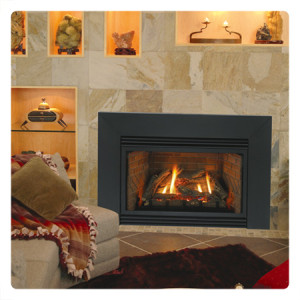 You may be surprised to learn that vent-free gas appliances produce water vapors, a process that occurs naturally when burning a combination of gas and air. This is especially valuable since during colder months, the relative humidity—or the percentage of water vapor in the air—is low.
You may be surprised to learn that vent-free gas appliances produce water vapors, a process that occurs naturally when burning a combination of gas and air. This is especially valuable since during colder months, the relative humidity—or the percentage of water vapor in the air—is low.
According to the Mayo Clinic, low humidity can lead to dry skin, throat, and sinuses, as well as cause eye irritation. If you or a loved one experiences these symptoms or respiratory illnesses in the winter, you may want to consider purchasing a ventless fireplace or vent-free gas logs.
An Ideal Level of Humidity
The Association of Home Appliance Manufacturers, the trade association for the humidifier industry, recommends a 60% indoor relative humidity. Water vapors in your home come from a variety of sources, such as dishwashers, ranges, and showers. To improve the level of comfort and reduce symptoms like sore throat and nasal dryness, many people add humidification with either a portable or whole-house system.
Keep in mind that a home is not airtight. Even one built to the tightest construction standards allowed by codes still has at least 0.35 air exchanges per hour. This means the higher-humidity indoor air is constantly being replaced by lower-humidity outdoor air. You’ve probably noticed cold air leaks around the windows and doors in your own home during winter. That’s indicative of air exchange taking place. While vent-free products increase the relative humidity, the air exchange decreases the relative humidity, which can help you achieve and optimum level of humidity in your home.
How Does a Vent-Free Appliance Work in a Tightly Constructed Home?
The answer is very well. It’s simple: A well-constructed home requires less heating, and as a result, the appliance will operate for a shorter period of time and produce less water vapor. Of course, in average homes, particularly those located in the most northern climates, you may notice some condensation on cold surfaces such as the inside of the windows. However, this condition is indicative of the weather and the construction, and would most likely exist whether or not a vent-free appliance is present.
If you’d like to learn more about the benefits of vent-free gas logs and fireplaces, view our FAQs or contact us today!

